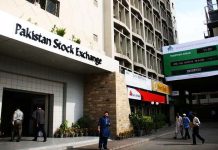DM Monitoring
WASHINGTON: U.S. employers likely hired the fewest workers in five months in October, in what would be clearest indication yet that the end of fiscal stimulus and exploding new COVID-19 infections were sapping momentum from the economic recovery.
The Labor Department’s closely watched employment report on Friday will underscore the challenges the next president, whether it is incumbent Republican Donald Trump or Democrat Joe Biden, confronts to keep the economy growing as it heals from the deepest recession since the Great Depression.
Biden inched closer to victory on Thursday in an exceedingly close U.S. election, while Trump alleged fraud without providing evidence, filing lawsuits and calling for recounts in a race yet to be decided since polls closed on Tuesday.
“The October jobs report is likely to show evidence of a weakening labor market,” said Dean Baker, senior economist at the Center for Economic and Policy Research in Washington. “This is an urgent problem facing whoever will be in the White House.”
Nonfarm payrolls likely increased by 600,000 jobs in October after rising 661,000 in September, according to a Reuters survey of economists. That would be the smallest gain since the jobs recovery started in May and leave employment 10.1 million jobs below its February peak.
The employment report is also expected to show increases in the ranks of people who have permanently lost their jobs, as well as those who have been out of work for more than six months.
A contested election reduces the chances of another coronavirus rescue package from the government this year. Even if more fiscal policy is agreed on, it will likely be smaller than had been anticipated before the election.
That will shift the spotlight to the Federal Reserve.
The U.S. central bank kept interest rates near zero on Thursday. Fed Chair Jerome Powell acknowledged the pace of improvement in the economy and labor market had moderated, noting that the recovery would be stronger with more fiscal support.
More than $3 trillion in government pandemic relief for businesses and workers fueled a historic 33.1% annualized rate of economic growth in the third quarter. That followed a record 31.4% pace of contraction in the April-June quarter.
Lack of fiscal stimulus and spiraling new coronavirus infections across the country have put the economy on a sharply slower growth path heading into the fourth quarter. Restaurants and gyms have moved outdoors, but cooler weather and the resurgence in COVID-19 infections could leave many in trouble.
Even if states and local governments do not impose new restrictions on businesses, consumers are likely to stay away, fearing exposure to the respiratory illness. The United States set a one-day record for new coronavirus cases on Wednesday with at least 102,591 infections, according to a Reuters tally.
DOWNSIDE RISK
“The virus is still keeping many people from going to their local restaurants, bars and cafes, and this continues to weigh on the employment numbers for small businesses,” said Torsten Slok, chief economist at Apollo Global Management in New York.
“Given half of U.S. employment is in businesses with less than 500 workers and given the lower likelihood of additional fiscal support, this is a downside risk to nonfarm payrolls over the coming months, including tomorrow.






